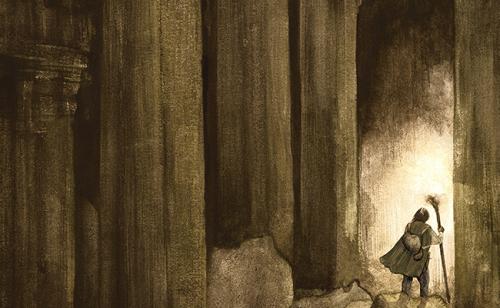This Folio Life: Neil Gaiman on Gormenghast
A grand and gothic dream, the Folio Society’s lavish limited edition of The Gormenghast Trilogy offers a testament to Peake’s timeless creative genius.
In this extract from Neil Gaiman’s introduction to The Gormenghast Trilogy, written exclusively for Folio’s limited edition, the award-winning fantasist celebrates Peake’s incredible imagination.

Gormenghast is, to my mind and to my taste, a perfect creation. A post-medieval castle, a place the size of a city, in which we find an English middle-class household of the first half of the twentieth century, an English village complete with a school, and an upstairs downstairs manor house, filled with servants and family and the equivalent of the occasional awkward weekend guest who will, of course, be staying forever.

There are no other characters in literature who live so visually in my mind as the inhabitants of Gormenghast. There are authors out there who have created moving, brilliant books, filled with characters who breathe and feel and love, true. There are authors who have made perfect, plangent sentences, some of which, I suspect, I will be able to recite long after I have forgotten everything else. Only Mervyn Peake paints in my head, using words as his medium. His creations live and breathe in our heads because we can see them.

Images splash and tumble from Peake’s pen: The horse on the roof of the Gormenghast tower; Gertrude’s tumbling red hair and white cats; the hunch of Steerpike’s shoulders, the pout of Fuchsia’s lips; Swelter’s monstrous bloat as he dips hard-boiled eggs into the salt-cellar of his navel; the hall of bright carvings; the webs in the hall of the spiders . . . and I could continue, and continue, listing the things I love in Gormenghast (the twins’ tree, the way Barquentine moves) but again, not attempting to describe them, because they are waiting here for you, vivid and baroque and better described than I could ever hope to emulate.
Peake can see them. All the people, all the places. He writes as if he has wandered the halls where they walked. And he makes us see them too.
Take a closer look at this limited edition here.





